Biology > QUESTION PAPER (QP) > AQA 2022// GCSE BIOLOGY Higher Tier Paper 1H (All)
AQA 2022// GCSE BIOLOGY Higher Tier Paper 1H
Document Content and Description Below
Materials For this paper you must have: • a ruler • a scientific calculator. Instructions • Use black ink or black ball-point pen. • Pencil should only be used for drawing. • Fill in ... the boxes at the top of this page. • Answer all questions in the spaces provided. • If you need extra space for your answer(s), use the lined pages at the end of this book. Write the question number against your answer(s). • Do all rough work in this book. Cross through any work you do not want to be marked. • In all calculations, show clearly how you work out your answer. Information • The maximum mark for this paper is 100. • The marks for questions are shown in brackets. • You are expected to use a calculator where appropriate. • You are reminded of the need for good English and clear presentation in your answers. Please write clearly in block capitals. Centre number Candidate number Surname Forename(s) Candidate signature I declare this is my own work. GCSE BIOLOGY Higher Tier Paper 1H H 2 *02* IB/M/Jun22/8461/1H Do not write outside the There are no questions on this page box DO NOT WRITE ON THIS PAGE ANSWER IN THE SPACES PROVIDED 3 *03* Turn over ► IB/M/Jun22/8461/1H Do not write outside the Answer all questions in the spaces provided. box 0 1 This question is about cells and transport. 0 1 . 1 Complete Table 1. [3 marks] Table 1 Name of cell part Function of cell part Contains genetic information Mitochondria Controls the movement of substances into and out of the cell Cells in potatoes are plant cells. Cells in potatoes do not contain chloroplasts. 0 1 . 2 What is the function of chloroplasts? [1 mark] 0 1 . 3 Name one type of cell in a potato plant that does not contain chloroplasts. [1 mark] Question 1 continues on the next page 4 *04* IB/M/Jun22/8461/1H Do not write outside the box A student investigated the effect of salt concentration on pieces of potato. This is the method used. 1. Cut three pieces of potato of the same size. 2. Record the mass of each potato piece. 3. Add 150 cm3 of 0.4 mol/dm3 salt solution to a beaker. 4. Place each potato piece into the beaker. 5. After 30 minutes, remove each potato piece and dry the surface with a paper towel. 6. Record the mass of each potato piece. 7. Repeat steps 1 to 6 using different concentrations of salt solution. 0 1 . 4 What is the independent variable in the investigation? [1 mark] Tick () one box. Concentration of salt solution Mass of potato piece Time potato is left in salt solution Volume of salt solution 0 1 . 5 Why did the student dry the surface of each potato piece with a paper towel in step 5? [1 mark] 5 *05* Turn over ► IB/M/Jun22/8461/1H Do not write outside the The student calculated the percentage change in mass of each potato piece box . 0 1 . 6 For one potato piece: • the starting mass was 2.5 g • the end mass was 2.7 g. Calculate the percentage increase in mass of the potato piece. [2 marks] Use the equation: percentage increase in mass = increase in mass starting mass × 100 Percentage increase in mass = % Question 1 continues on the next page 6 *06* IB/M/Jun22/8461/1H Do not write outside the The student used the results from each potato piece to calculate the mean percentage box change in mass at each concentration. Table 2 shows the results. Table 2 Concentration of salt solution in mol/dm3 Mean percentage (%) change in mass 0.0 9.8 0.1 9.5 0.2 7.0 0.3 0.4 0.4 −1.4 0 1 . 7 Complete Figure 1. You should: • label the x-axis • use a suitable scale for the x-axis • plot the data from Table 2 • draw a line of best fit. [4 marks] 7 *07* Turn over ► IB/M/Jun22/8461/1H Do not write outside the Figure 1 box 0 1 . 8 What concentration of salt solution was equal to the concentration of the solution inside the potato pieces? Use Figure 1. [1 mark] Concentration = mol/dm3 Question 1 continues on the next page 8 *08* IB/M/Jun22/8461/1H Do not write outside the box 0 1 . 9 Explain why the potato pieces in the 0.4 mol/dm3 salt solution decreased in mass. [3 marks] 17 9 *09* Turn over ► IB/M/Jun22/8461/1H Do not write outside the box 0 2 Plant cells and fungal cells are similar in structure. Figure 2 shows a fungal cell. Figure 2 0 2 . 1 Name one structure in Figure 2 which is present in both plant cells and fungal cells but not in animal cells. [1 mark] 0 2 . 2 Which disease is caused by a fungus? [1 mark] Tick () one box [Show More]
Last updated: 1 year ago
Preview 1 out of 40 pages
Instant download

Buy this document to get the full access instantly
Instant Download Access after purchase
Add to cartInstant download
Reviews( 0 )
Document information
Connected school, study & course
About the document
Uploaded On
Apr 04, 2023
Number of pages
40
Written in
Additional information
This document has been written for:
Uploaded
Apr 04, 2023
Downloads
0
Views
244

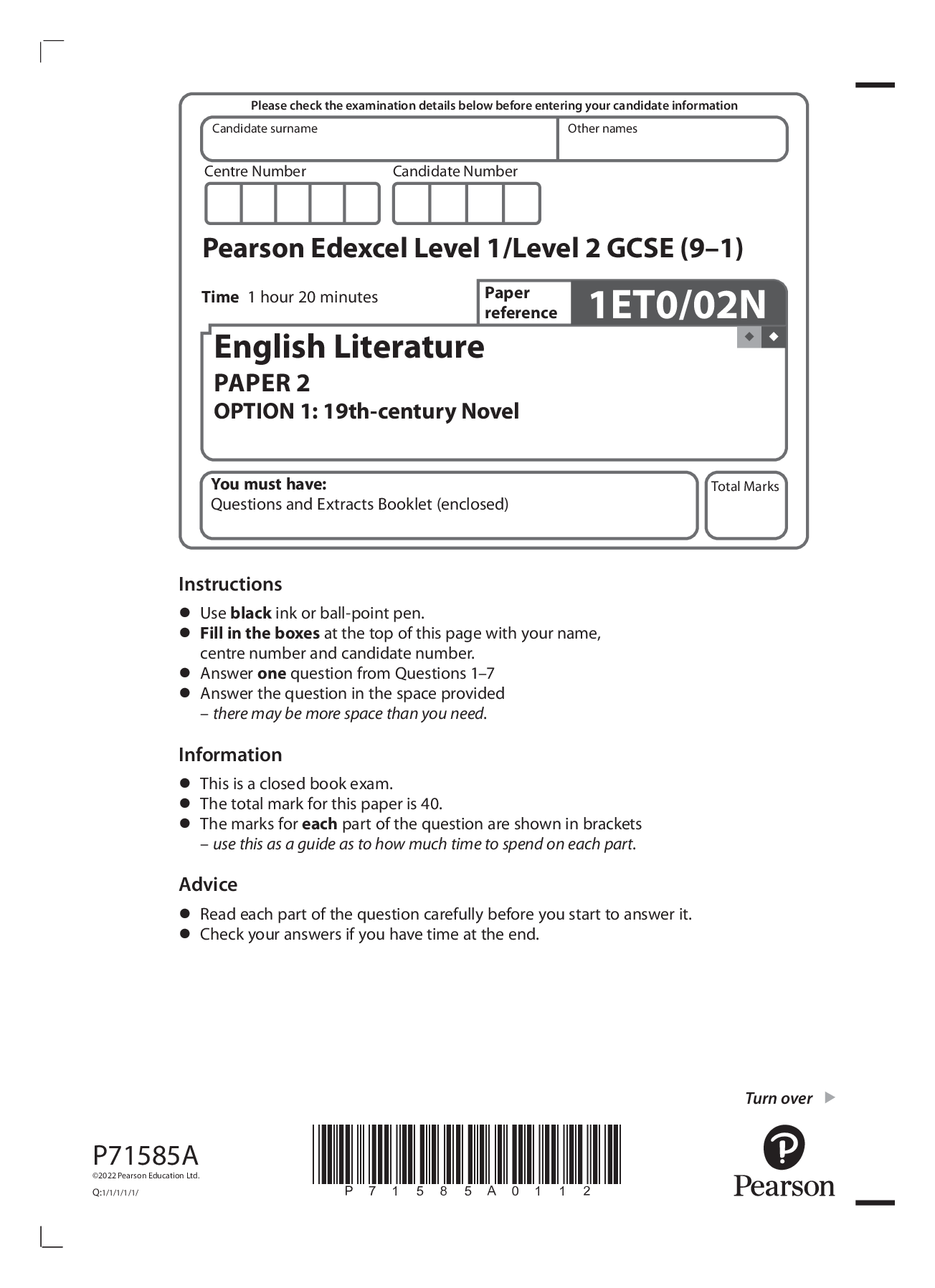
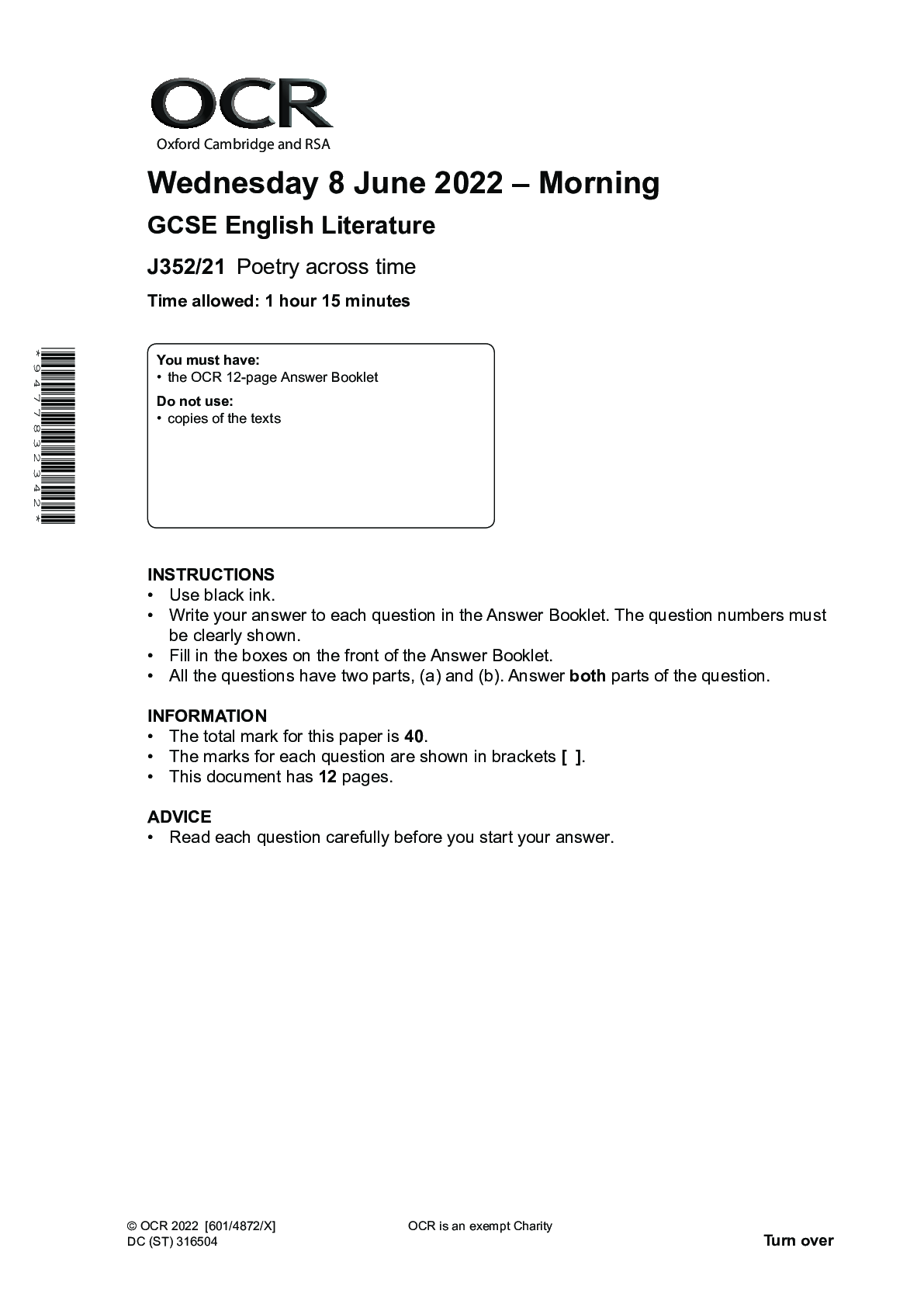

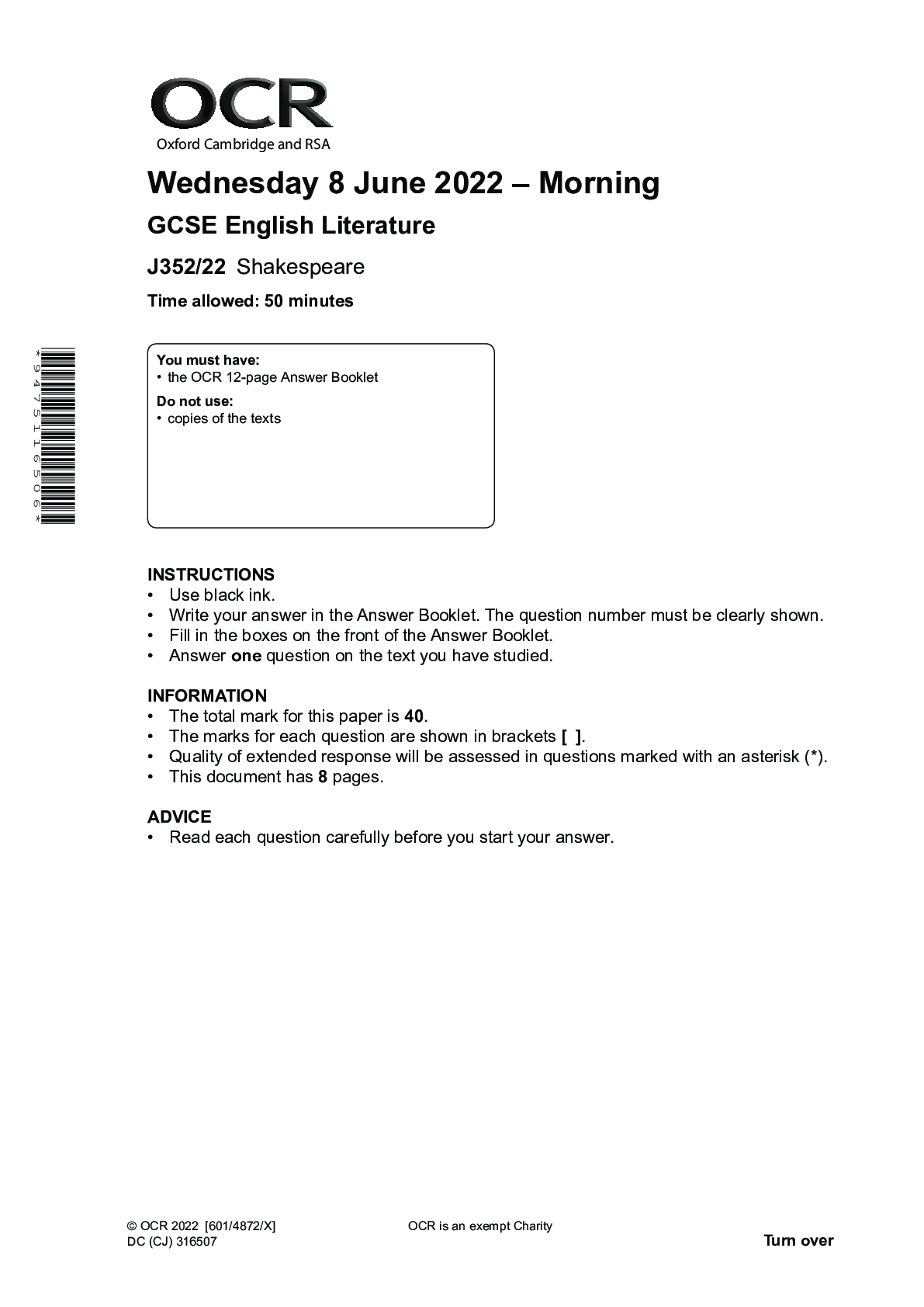
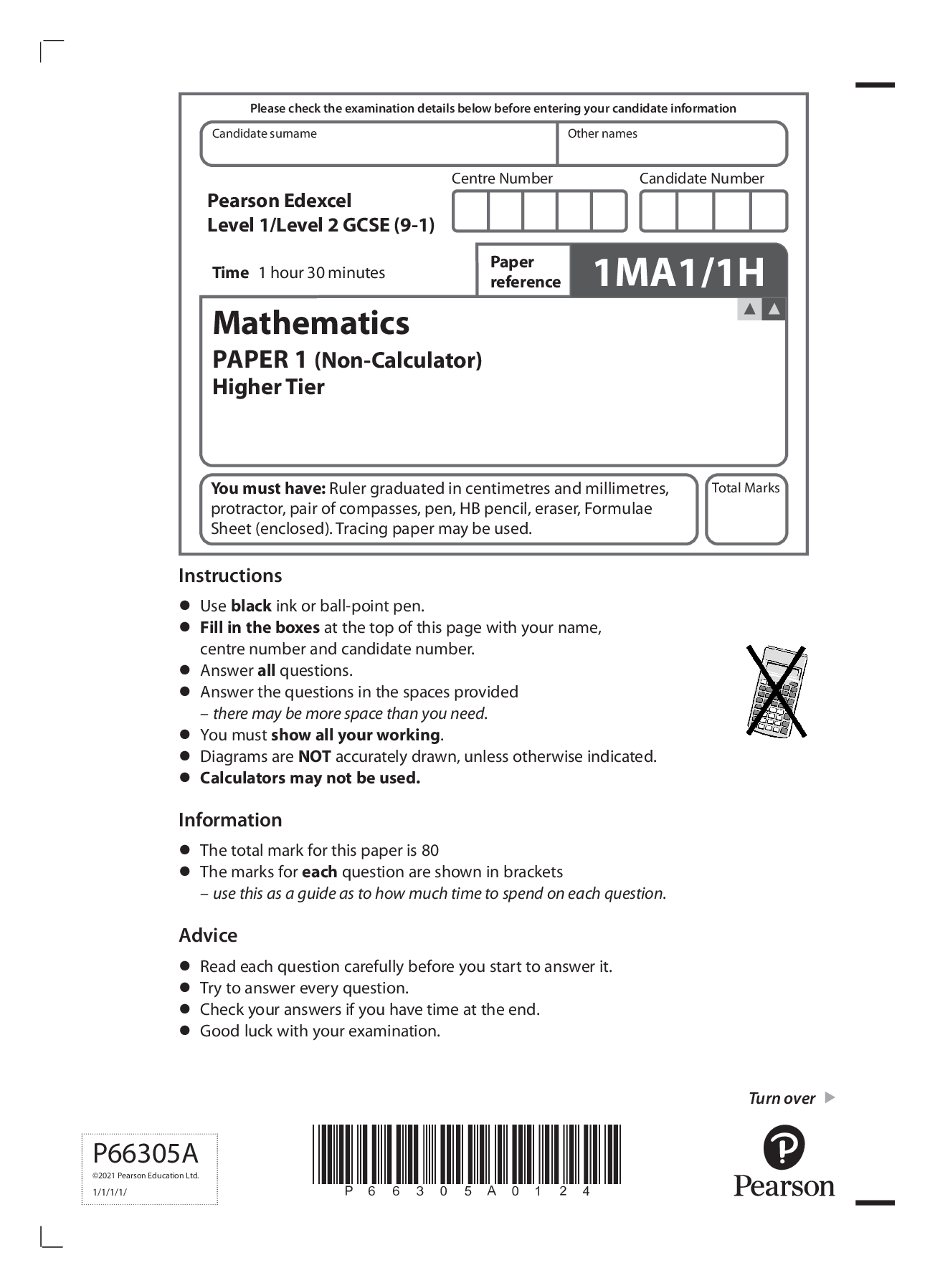

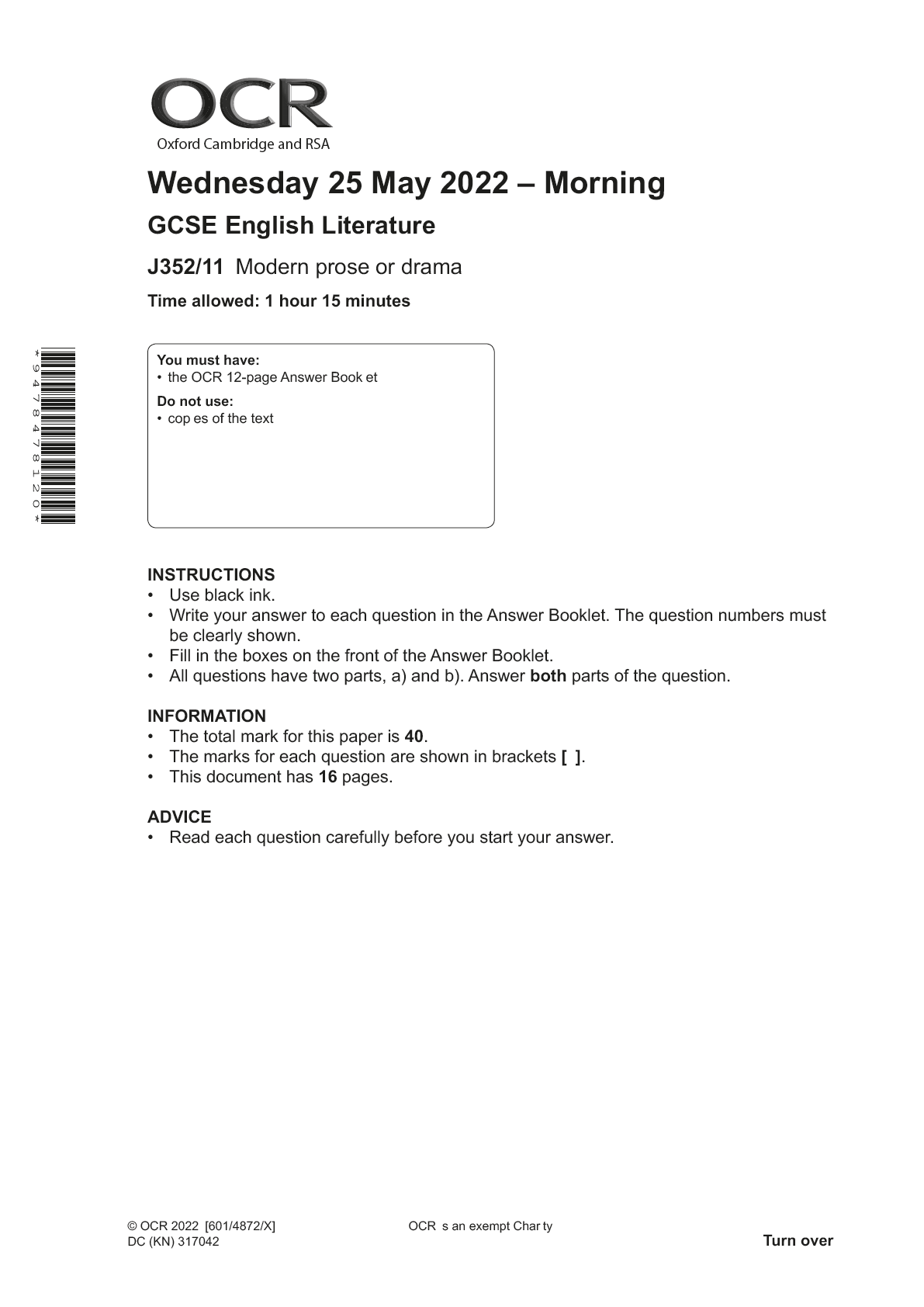
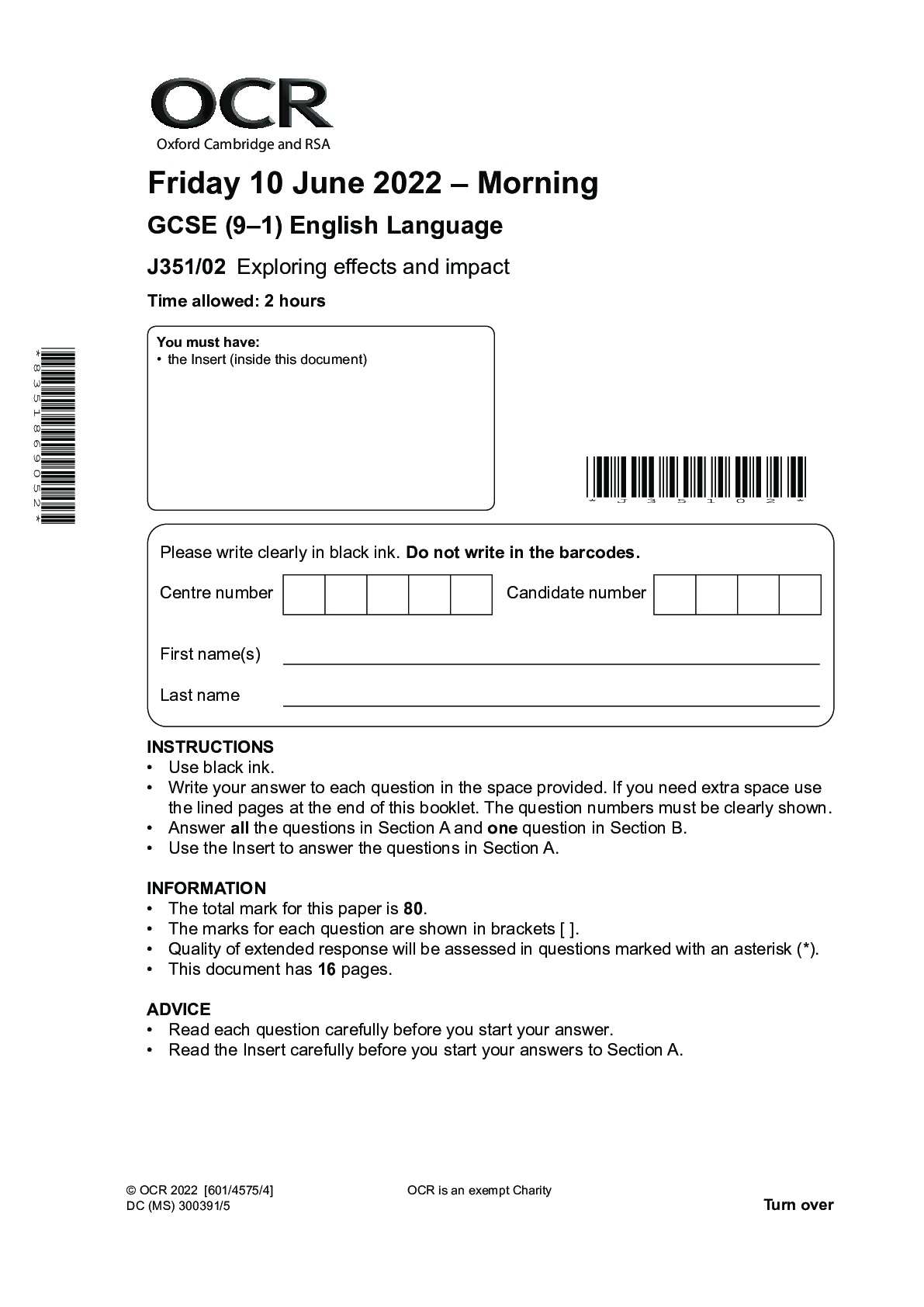

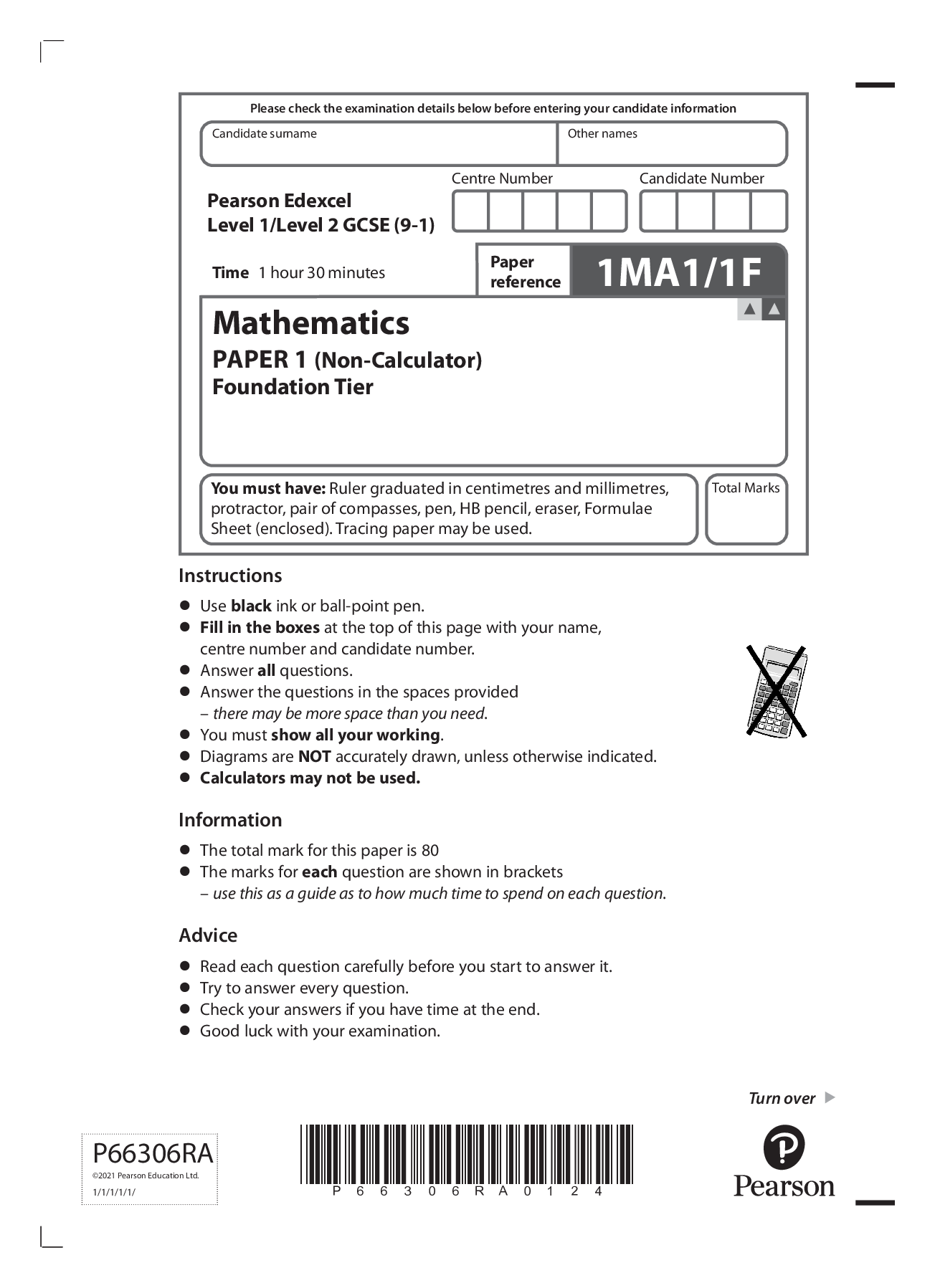
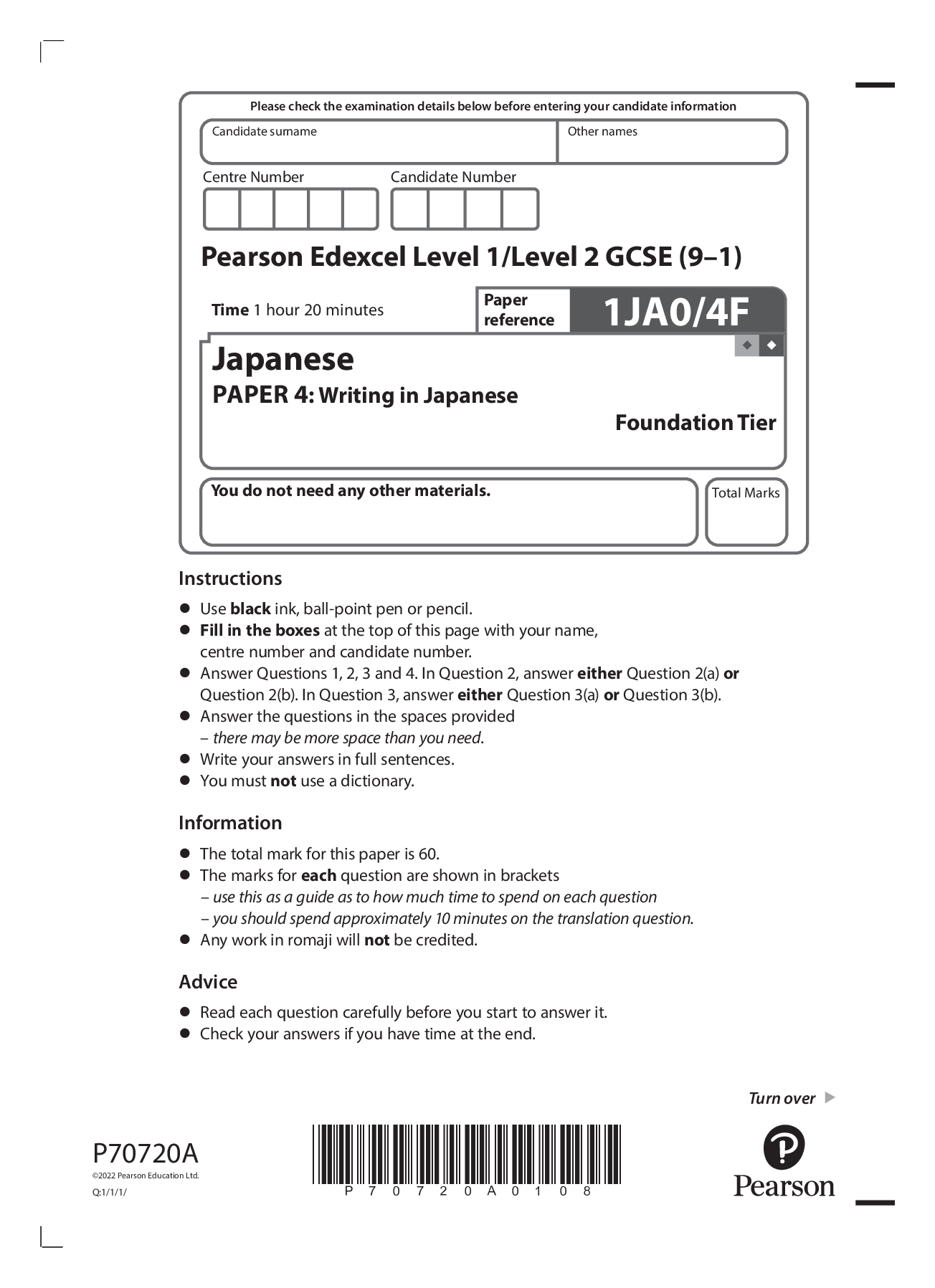


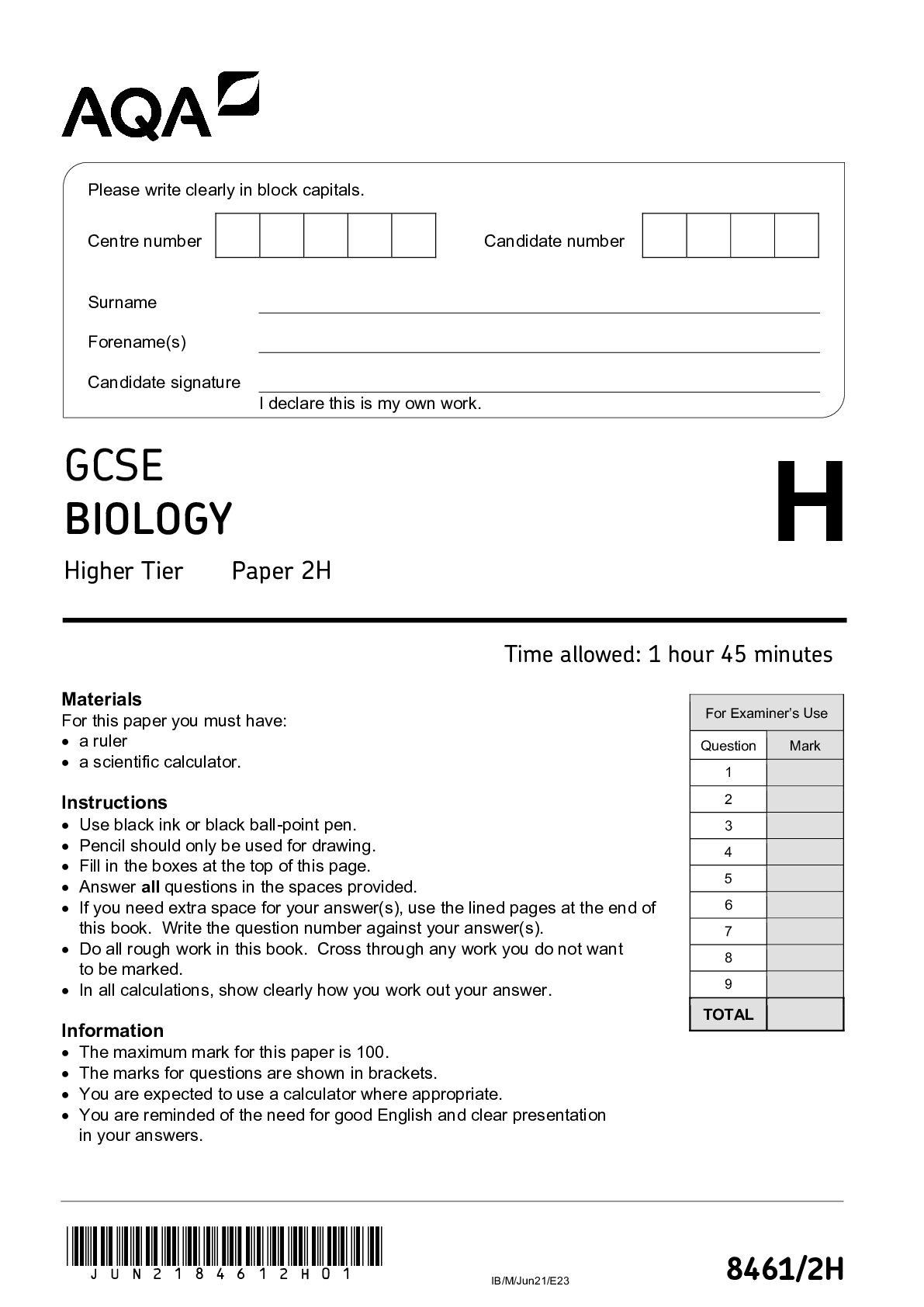
.png)

